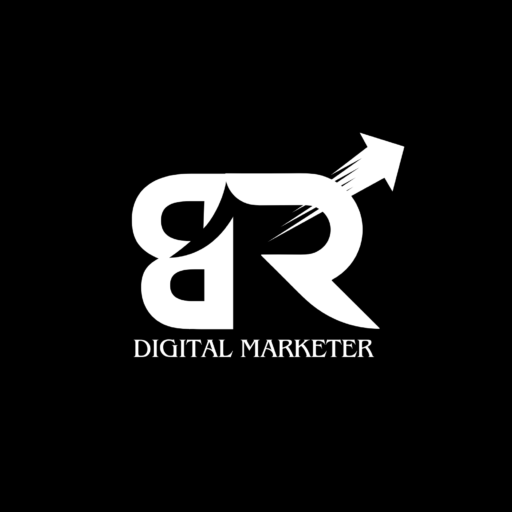5 key diffferences between Paid Social Media Ads & Organic Growth

In the modern digital environment, social media has emerged as an essential resource for businesses to engage with their audience, enhance brand visibility, and foster growth. Nevertheless, an important question frequently rised is: Should one prioritize paid social media advertising or organic growth? While both strategies possess their advantages, the appropriate choice is contingent upon the specific goals, budgetary considerations, and general strategy of your business. This blog aims to examine both approaches in depth to facilitate an informed decision-making process.
Paid Social Media Ads & Organic Growth
Paid social media ads are a quick way to get your content in front of the right people by paying for targeted promotions on platforms like Facebook or Instagram. They’re great for boosting visibility and driving fast results.
Organic growth, on the other hand, is all about building your presence naturally by sharing valuable content, engaging with your audience, and being consistent. It takes time but helps you build trust and long-term loyalty.
Understanding Organic Growth
Organic growth refers to building an audience naturally without paying for advertisements. It involves sharing content, engaging with followers, and leveraging platform algorithms to reach new people.
Key Features of Organic Growth
- Cost-Effective: Organic growth does not require ad spend, making it ideal for startups or businesses with tight budgets.
- Builds Trust: It fosters a genuine connection with the audience, enhancing trust and credibility.
- Long-Term Value: Unlike paid ads, the benefits of organic growth accumulate over time and don’t stop when spending does.
Strategies for Organic Growth
- Constant content creation: Make sure to regularly share great and interesting posts that your audience will love.
- Use Hashtags: Add relevant hashtags to help people find your stuff.
- Engage with Your Audience: Respond to comments, join in on discussions, and interact with your followers.
- Collaborate: Work with influencers or other brands to reach more people.
- Optimize Your Profiles: Make sure your social media profiles look good, are fully filled out, and match your brand vibe.
Benefits of Organic Growth
- No direct financial cost.
- Builds an engaged and loyal community.
- Sustainable and compounding over time.
Disadvantages of Organic Growth
- Time-intensive; results may take months or years.
- Limited reach due to platform algorithm changes.
- Difficult to scale quickly.
What Are Paid Social Media Ads?

Paid social media ads are sponsored posts or campaigns businesses pay to run on platforms like Facebook, Instagram, LinkedIn, or TikTok. These ads target specific audiences based on demographics, interests, and behavior.
Types of Paid Social Media Ads
- Pay-Per-Click (PPC): Pay when someone clicks on your ad.
- Boosted Posts: Amplify the reach of an existing post.
- Carousel Ads: Showcase multiple images or videos in a single ad.
- Video Ads: Use engaging videos to captivate audiences.
- Lead Ads: Collect user information directly within the social media platform.
Benefits of Paid Social Media Ads
- Immediate Results: Ads can drive traffic, leads, or sales almost instantly.
- Targeted Reach: Advanced targeting options allow you to reach specific audience segments.
- Scalability: Adjust budgets to increase or decrease campaign scope.
- Analytics: Access detailed insights to measure ROI and optimize performance.
Disadvantagess of Paid Social Media Ads
- Requires a budget, which can be substantial for effective campaigns.
- Results stop when the ad spend ends.
- Ad fatigue can set in if audiences see the same ad repeatedly.
1. Cost and Investment
Paid social media ads require an upfront financial investment, with costs varying based on competition, target audience, and platform. In contrast, organic growth is more cost-effective as it relies on content creation and audience engagement without direct spending, although it requires significant time and effort.
2. Reach and Visibility
Paid social media ads allow brands to reach a larger, targeted audience quickly by leveraging specific targeting preferences, resulting in immediate visibility and engagement. In contrast, organic growth is a slower process, primarily dependent on current followers and their networks, and is often limited by platform algorithms that favor paid content.
3. Long-Term vs Short-Term Impact
Paid Social media ads give quick results. As soon as your campaign starts, you can see people engaging, buying, and showing interest right away. But when you stop paying, your reach and visibility will drop a lot. Paid ads work best for short-term goals, like launching a product, running seasonal sales, or getting visitors to a landing page.Organic growth is slower but helps build lasting loyalty and a true community around your brand. Over time, if you keep engaging and sharing good content, your audience will grow naturally. The good thing about organic growth is that it can keep going without needing to spend money all the time, as long as your brand stays active.
4. Control Over Targeting
With Paid Social Media Ads, you can choose exactly who sees your ads. You can target people based on their age, interests, jobs, shopping habits, or similar groups. This helps you create focused campaigns that can show quick and clear results.Organic growth is not as precise. You can use hashtags, keywords, and SEO to try to reach more people, but you might not connect with your ideal customer right away. Organic growth is about reaching a larger audience and depending on the quality of your content and how well you engage with your community to attract the right people.
5. Engagement and Authenticity
Paid Social Media Ads usually show up as promotions, which can make some users feel less connected to the brand. While these ads can bring in clicks, purchases, or sign-ups, people might not engage with them as much as they do with regular posts. Many users see ads as just a business deal instead of a real connection. Organic growth helps brands build real relationships with their audience. By sharing content that your followers enjoy—like helpful, fun, or interesting posts—you create chances for real interactions. Comments, likes, shares, and chats feel more sincere and can help build trust with your audience, leading to stronger, lasting relationships.
Comparing Paid Ads and Organic Growth
| Aspect | Organic Growth | Paid Social Media Ads |
|---|---|---|
| Cost | Free, but time-intensive | Requires budget but offers quick results |
| Reach | Limited by algorithms | Can target specific, large audiences instantly |
| Engagement | Builds genuine and lasting connections | Temporary, engagement ends when the campaign stops |
| Speed of Results | Slow, requires consistency over months or years | Immediate impact once the campaign is live |
| Longevity | Benefits compound over time | Short-term impact unless ads are continuously run |
| Targeting Options | Limited to organic discovery and engagement | Advanced targeting based on demographics and behavior |
Which is Right for You?
Choosing between paid social media ads and organic growth depends on several factors:
Business Goals
- Short-Term Goals: If you need immediate results, such as a boost in sales or website traffic, paid ads are your best bet.
- Long-Term Goals: For brand awareness, loyalty, and sustainable growth, organic methods are ideal.
em ipsum dolor sit amet, consectetur adipiscing elit. Ut elit tellus, luctus nec ullamcorper mattis, pulvinar dapibus leo.
Budget
- If you have a limited budget, focus on organic growth strategies while occasionally running small ad campaigns.
- Larger budgets allow for experimenting with paid ads to complement organic efforts.
Audience Engagement
- Organic growth is better for developing meaningful relationships.
- Paid ads can reach audiences that are harder to engage with organically.
Industry and Competition
- Competitive industries often require paid ads to stay visible.
- In less competitive niches, organic growth might be sufficient.
Blending Both Approaches
When organic growth and paid advertising are combined, the true magic unfolds. While organic efforts gradually maintain such audiences interested and devoted, paid advertisements can expand your reach and attract new visitors to your page. For instance, while a sponsored campaign may bring in new Instagram followers, consistent organic content keeps them interested and connected to your business.
For most businesses, a combination of both strategies works best. Here’s how you can integrate them:
- Start with Organic Growth: Build a strong foundation of loyal followers by consistently sharing valuable content.
- Use Paid Ads to Amplify: Run paid campaigns to promote your best-performing content or reach new audiences.
- Analyze and Adjust: Continuously monitor both organic and paid efforts to determine which approach delivers better results.
- Invest in Retargeting: Use paid ads to retarget users who have already interacted with your organic content.
Conclusion
Whether you’re interested in paid social media ads for fast results or focusing on organic growth for long-term success, the right strategy makes all the difference. Visit Your Website Name to explore more tips, strategies, and services that can help your business thrive online.
Paid social media ads and organic growth each have their own pros and cons. The trick is to match your strategy with your business goals and what you have available. Organic growth helps you create a loyal community over time, while paid ads can quickly boost your visibility and sales. Combining both methods usually works best for succeeding in today’s ever-changing social media landscape.


